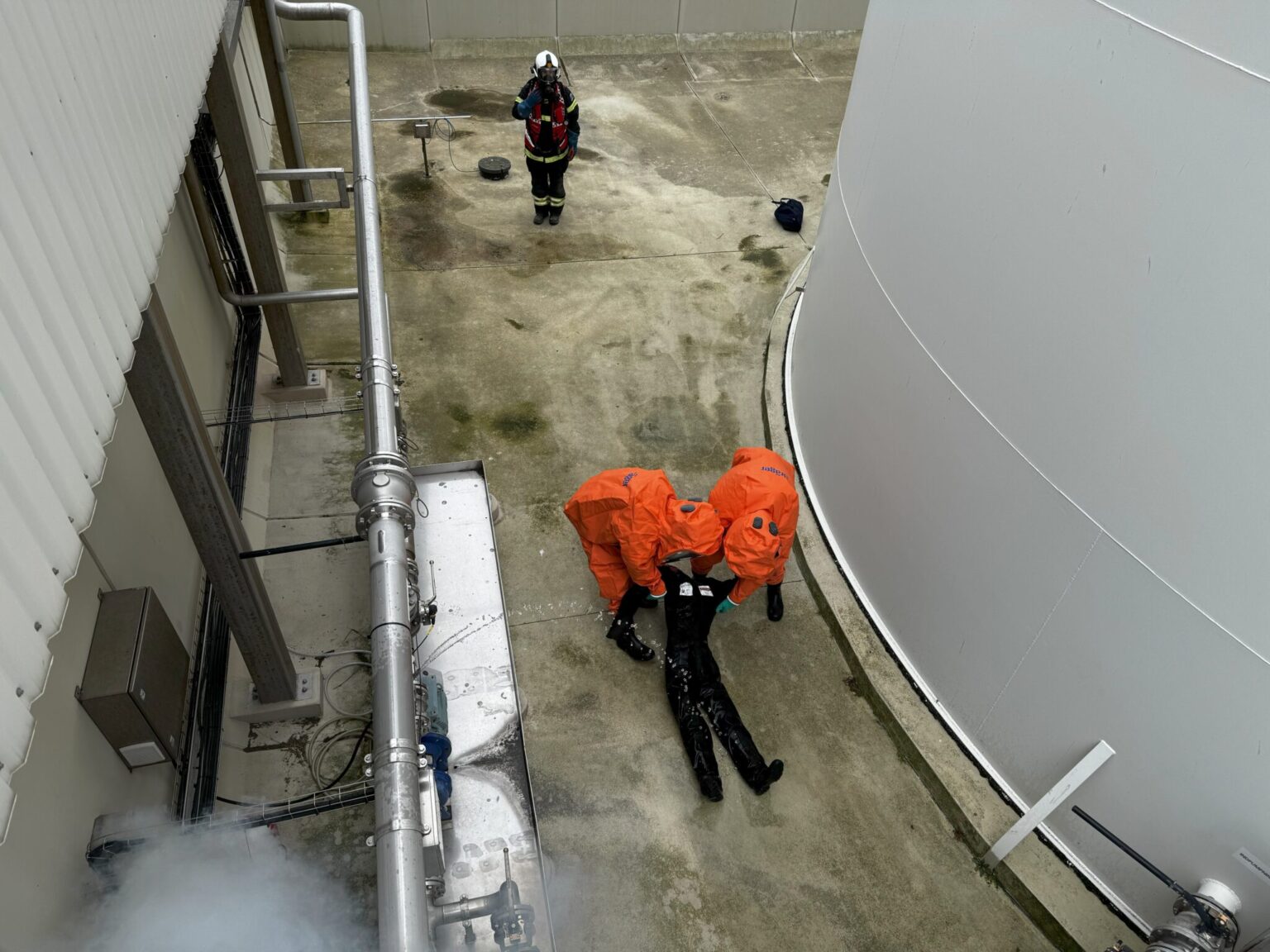Wednesday's incident with smoke, drones and rescue vehicles in Kalundborg Port was fortunately only an exercise that strengthens safety at Kalundborg Tank Terminal and cooperation with emergency services.

Wednesday's incident with smoke, drones and rescue vehicles in Kalundborg Port was fortunately only an exercise that strengthens safety at Kalundborg Tank Terminal and cooperation with emergency services.
On Wednesday, May 28, Kalundborg Tank Terminal (KTT) conducted a planned emergency drill in close cooperation with the West Zealand Fire Department and the Central and West Zealand Police. The drill aimed to test and fine-tune the emergency plans in connection with potential accidents at the terminal: this time with a scenario of a nitric acid spill during a transshipment.
Passersby and witnesses might have wondered at the sight of smoke and rescue vehicles, but fortunately it was just a drill.
The exercise simulated an incident involving two casualties – in this case played by two lifeguard dummies – one of whom was directly in the spill inside the tank farm. Nitric acid is highly corrosive and can form fumes that affect the airways and breathing, so both a smoke machine and a water hose were set up to mimic a real incident as closely as possible.
The rescue effort included both chemical divers who were sent into the tank farm to rescue the "injured" and stop the spill, as well as a drone, which was used for overview and coordination.
The exercise demonstrated how modern technology and classic emergency response work can go hand in hand, and that the cooperation between KTT, the fire department and the police works smoothly, even under pressure.
Parts of KTT are classified as a high-risk business due to the storage of nitric acid, which is stored for an external customer. Therefore, it is crucial for the company to both protect its customers' products and document that the safety of people, the environment and property is top-notch. This requires training – and that is precisely why it is good to have an exercise so that all parties are ahead of a real incident.
“Even though it was all done with dummies and dummy gas, the learning and purpose are absolutely crucial. The exercise gave us valuable insight into equipment, communication channels and collaboration, which we are now using to further strengthen our emergency plan,” says Bent Rasmussen, Director of Kalundborg Tank Terminal.
The emergency drill showed that KTT, the fire department and the police work closely and professionally together to ensure that everything from alarming to rescue and clean-up works if a real incident were to occur one day.
Such emergency drills must be conducted at least every three years in collaboration with the risk company to ensure that the so-called internal and external emergency plans work together. The exercise at KTT confirmed that systems and forms of cooperation are working, and at the same time revealed a few points for improvement – exactly as a good exercise should.
After a close evaluation meeting, the improvement points will be incorporated into the emergency plan so that a real incident – should it occur – is handled effectively, safely and in close coordination between all involved actors.
KTT consists of 17 tanks, distributed in specially designed tank farms, each of which is adapted to the product tank capacity. The nitric acid tank farm is designed to accommodate the contents of a full tank plus 10 % for up to three days. In addition, KTT has measures to ensure that a tanker can be obtained so that the farm can be emptied as quickly as possible.
Kalundborg Tank Terminal thanks all parties involved for an efficient and educational collaboration – and sends a friendly nod to the locals who must have wondered why firefighters and drones were suddenly swarming around the port area. It was all planned, and it all went as intended.